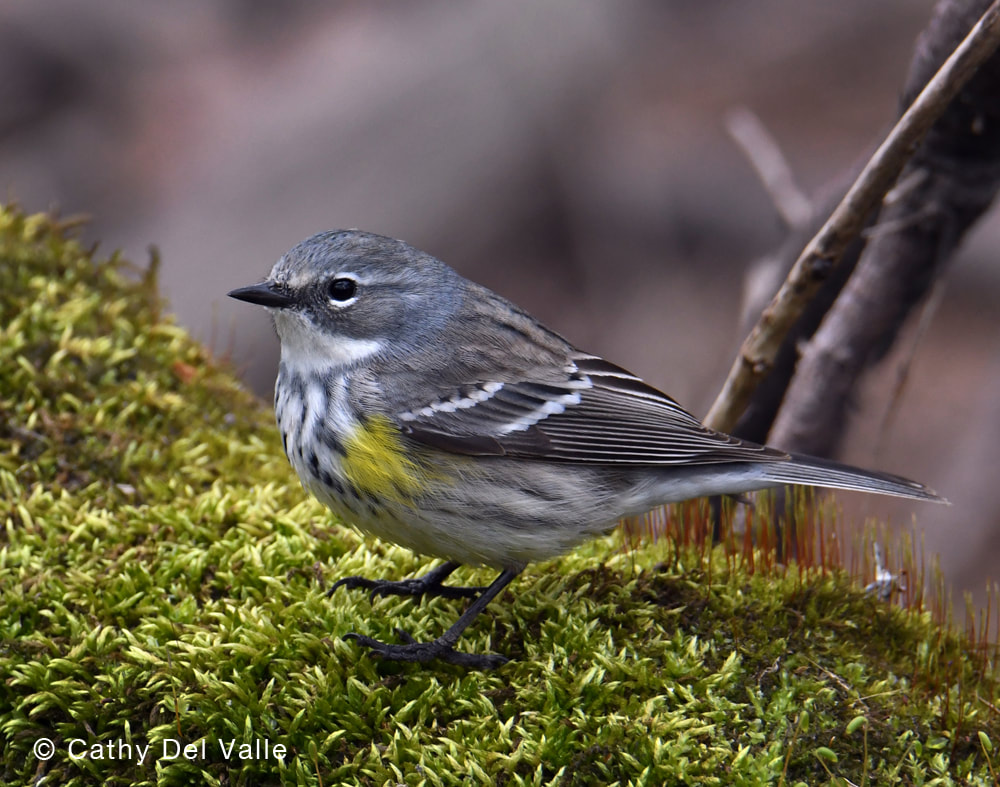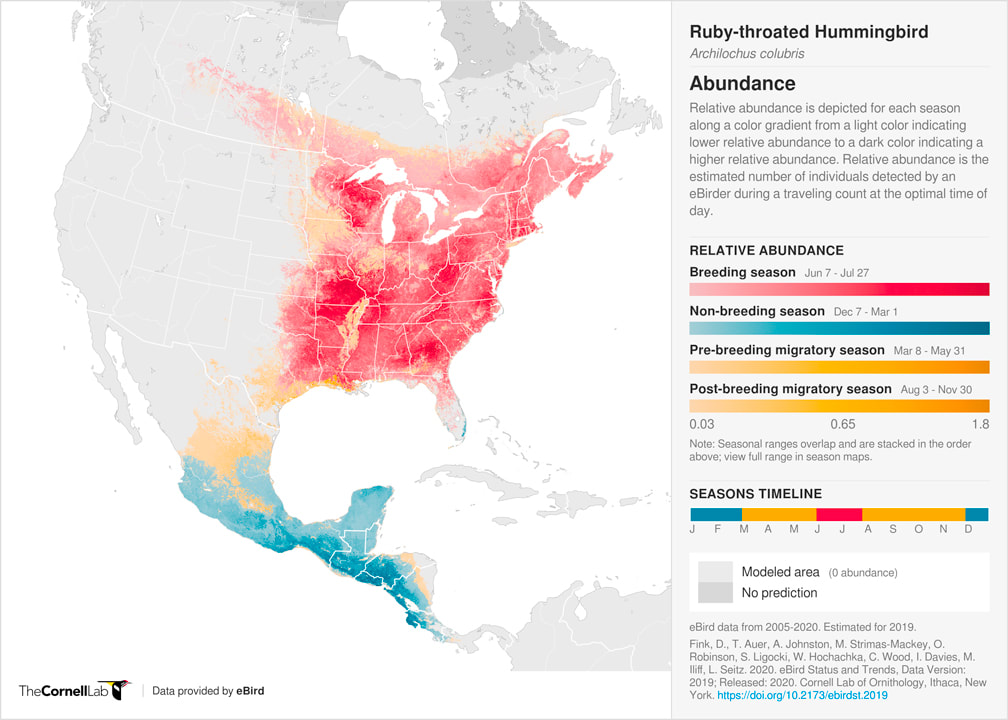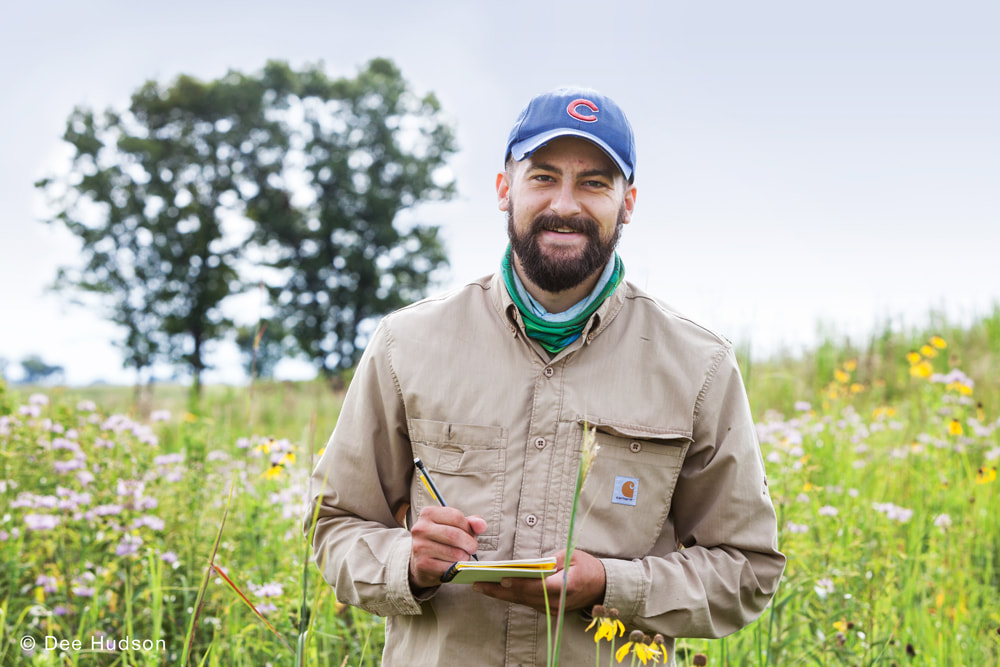|
By Antonio Del Valle MS Student Spring has arrived, and with it we are in the middle of experiencing one of the many natural marvels at Nachusa: spring bird migration. Certain species of birds fly south for the winter to warmer latitudes (Florida, Mexico, and even South America) and then return to breed in northern latitudes during the summer. The specific reasons for migration depend on how far birds migrate. Short-distance migratory birds head south mainly for food. When the growing season ends here in Illinois, insects, seeds, and other food sources dwindle, which drives birds south to locations where food sources and open water are readily available. The logic and theory behind long-distance migrants (those that travel to Central and South America) appears to be more complex. According to a concise article by the Cornell Lab of Ornithology, the history of long-distance migration appears to be rooted in evolution. Birds that evolved to migrate long distances gained an advantage over birds that stayed in the tropics by producing more young via seasonally increased day lengths and food availability in northern latitudes.  Yellow-rumped warblers (Setophaga coronate) have been passing through northern Illinois over the past couple weeks. These warblers over winter in southern US states and Mexico, and they breed as far north as Alaska and Newfoundland. They can be found this time of the year in the wooded areas of Nachusa, including Stone Barn Savanna. By the end of May they will have moved north to their breeding grounds. Although migration occurs twice annually (both in the spring and fall), it offers a chance to see some interesting bird species that do not spend much time in this area. Starting in March, we started to see a number of birds passing through Nachusa on their way north. Notably, whooping cranes (Grus americana) were observed among the larger groups of sandhill cranes (Antigone canadensis). These whooping cranes are a part of a recovering population of cranes that breed in central Wisconsin and over-winter in Florida. Thanks to conservation efforts, these federally endangered birds have started to recover (increasing from about 20 birds in the 1940s to about 600 today). Conservation efforts still continue for whooping cranes, and it is certainly a special treat to have them stopover at Nachusa. Besides cranes, high numbers of waterfowl were observed occupying the new wetland scrapes by the visitor center. In March and April there have been diving duck species observed, such as bufflehead (Bucephala albeola), ring-necked duck (Aythya collaris), and scaup. Here in April we are observing many more dabbling duck species like blue-winged teal (Spatula discors), hooded merganser (Lophodytes cucullatus), northern shoveler (Spatula clypeata), and wood duck (Aix sponsa). Though these species are visiting Nachusa now, many of them will continue northward to breeding grounds in the northern lakes of Wisconsin and Canada. As we progress through April into May, we will see more of our medium and long-distance migrants. These birds are making a long trek from Central and South America, sometimes flying long distances at once. One salient example of long-distance migration is the route of some ruby-throated hummingbirds (Archilochus colubris). These tiny birds are known to fly directly over the Gulf of Mexico from the Yucatan Peninsula to southern United States. That’s a 500 mile flight in approximately 20 hours! Though I haven’t seen any hummingbirds yet this spring, I bet there will be some in the area soon. As spring progresses, flowers bloom, and birds will continue moving northward. I hope you will be able to enjoy the wonders of Nachusa Grasslands and bird migration this spring. Citations & Resources:
Tony Del Valle's grassland bird research was supported in 2020 with a Scientific Research Grant from the Friends of Nachusa Grasslands. The Nachusa summer science externship is supported by The Nature Conservancy.
To get involved with the critical on-the-ground work at Nachusa, consider joining our Thursday or Saturday Workdays or giving a donation to the Friends of Nachusa Grasslands. Donations to Friends can be designated to Scientific Research Grants.
0 Comments
Your comment will be posted after it is approved.
Leave a Reply. |
Blog CoordinatorDee Hudson
I am a nature photographer, a freelance graphic designer, and steward at Nachusa's Thelma Carpenter Prairie. I have taken photos for Nachusa since 2012. EditorJames Higby
I have been a high school French teacher, registered piano technician, and librarian. In retirement I am a volunteer historian at Lee County Historical and Genealogical Society. Categories
All
Archives
January 2024
|
CONNECT WITH US |
|





 RSS Feed
RSS Feed